Pick
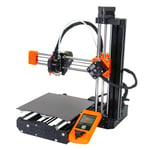
- Great value
- Exceptional print quality
- Pleasant and intuitive UI
- Some reports of extruder issues
- No carry handle

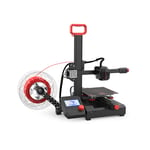
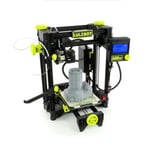
There are many reasons to look for a small 3D printer, not least because you simply don’t have much space for one. While your 3D printing horizons in such a situation, understandably, shrink, it doesn’t mean that you need to compromise on the 3D printing experience.
We’ve tasked ourselves with finding the most worthwhile small 3D printers and picked three outstanding specimens that offer the best blend of features, compactness, and portability – if we were forced out of All3DP towers into a cozy 1-bed apartment, these are the 3D printers we’d take with us.
With no shortage of printers to choose from, we set about the enviable task of shortlisting compact 3D printers, settling on the following criteria for what makes a good small 3D printer:
Now, compact in the context of our guide here does not necessarily mean the smallest. Rather, we’re looking at the intelligent use of the printer’s volume to contain everything the printer needs to function while remaining portable. There are plenty of 3D printers that give the impression of compactness but ultimately sprawl out to footprints up to and in excess of “larger” print volume machines. That just won’t do. We want 3D printers that are capable, easy to pick up and sling across the room, and take up relatively little benchtop space when in use.
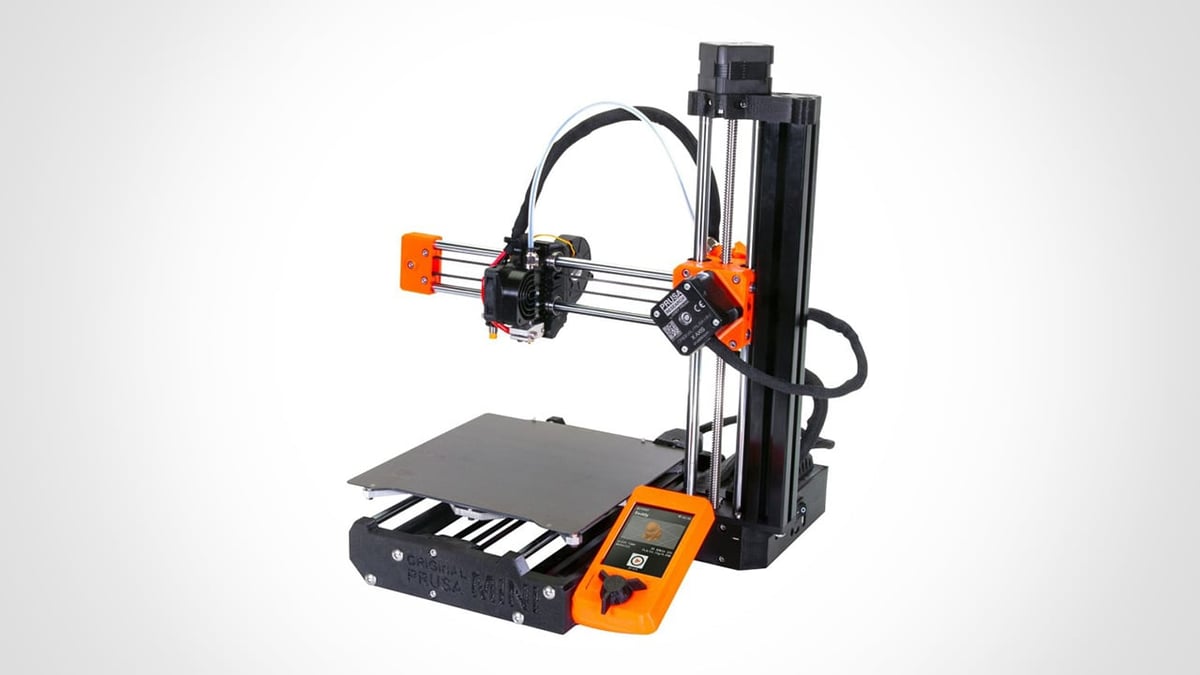
Despite its diminutive size, the Original Prusa Mini+ doesn’t hold back. This little printer prints objects of superb quality in a variety of materials, including PLA, ABS, PETG, and even high-temp plastics like PC.
The Original Prusa Mini+ benefits from automatic bed leveling through its SuperPinda probe. Dependable and reliable first-layers are a given, just one perk among many of this intelligent little printer.
Various self-checks and calibration wizards help you get set and printing, which is particularly helpful if you build the printer yourself and have doubts about your work.
The Mini+ does not have the smallest footprint of the printers we’ve picked, but it does offer one of the best print-volume-to-size ratios at 12%. The total space it takes up is 457 x 482 x 482 mm – more when you include the lack of onboard spool holding for the printer. Arguably this is the Mini+’s one great oversight, but Prusa Research has a solution in the form of a project to modify the Mini+’s base, accommodating the spool underneath the printer and raising it for a slightly taller overall height. There’s no handle, either, but the build is sturdy enough that you can grab it by the Z-pillar and swing it around without trouble.
Easy print removal from the PEI-coated magnetic print bed is helpful for a quick print turnaround. The printer’s silent operation, high print quality, broad material compatibility, comprehensive software, and ecosystem (including materials, models, support, and troubleshooting) all help separate the Original Prusa Mini+ as the best all-rounder small printer. It does it all, with a little effort on your part.


Creality’s 3D printers are typically few-frill affairs. In exchange for little money, you get great print quality, a simple setup, and not much else. The Ender 2 Pro typifies this with a simple, modular assembly and effortless printing for just $149.
That’s close to a third of the price of the Original Prusa Mini+. But, for the dollars saved, the trade-off is a little more effort on your part and an overall less sophisticated experience. You have to level the bed yourself, which can be a fiddly process if you have large hands trying to contort beneath the print bed to turn the bed-leveling nuts. Similarly cumbersome is the usage of microSD cards for transferring prints to the machine.
Aside from the minor quibbles, though, the Ender 2 Pro excels as a compact workhorse for printing the likes of PLA and PETG. The removable print bed makes print removal a cinch (be sure you’ve got your bed leveling perfected; you’ll bake filament into its surface otherwise), and sticking with default print settings results in fine 3D prints.
For portability, there’s a chunky carry handle, while the spool holder can collapse in itself and the display pulls free without the use of tools.
Creality provides Creality Slicer, a customized version of Cura, which includes the Ender 2 Pro print profile, simplifying setup and making the machine pretty accessible for newcomers.

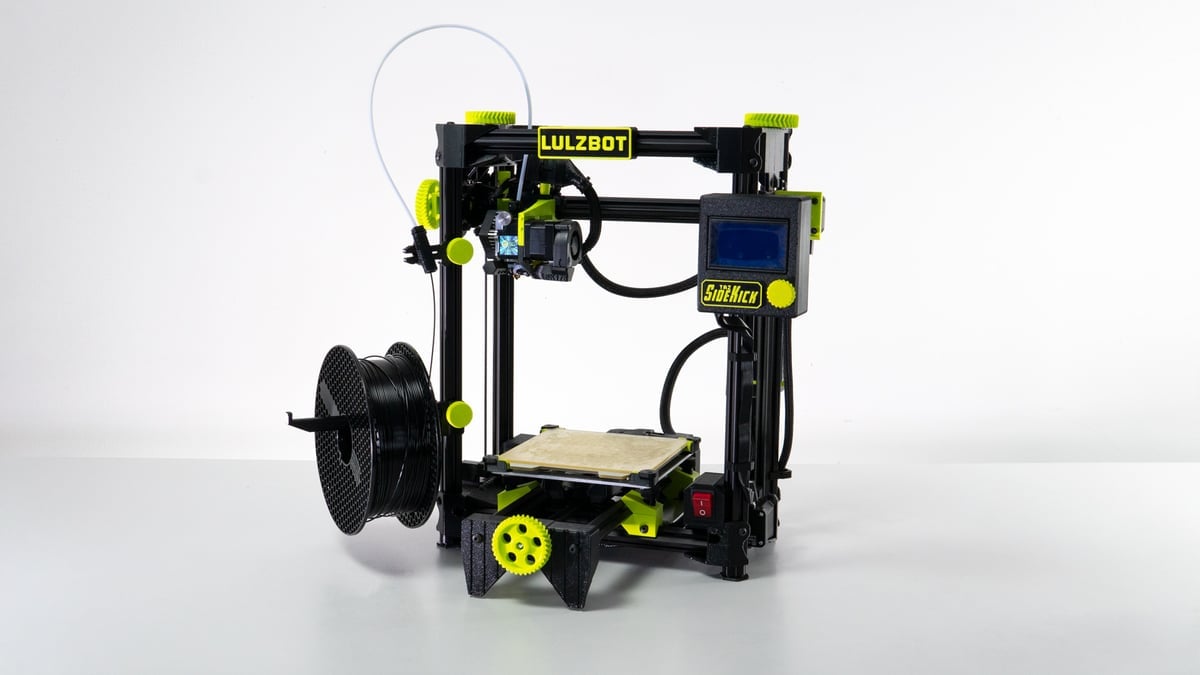
LulzBot’s Taz SideKick is a bit of a unique proposition. Available in two sizes and configurable at the point of purchase, meaning it can be tailored to particular materials and intended uses if you wish, the basic machine that underpins it all is designed to ship collapsed within itself. If you opt for the 289 variant, what lands on your doorstep is a unit no larger than a compact PC tower that unfolds and assembles without the need for tools.
The print head, bed, controller, and power supply all unfurl, a bit like a Transformer, just without the noise. And while the fully-assembled printer is far from being what we’d consider small, that it can collapse in such a way is excellent for portability and stowability. It does away with the jutting and protuberances you typically get when trying to move a 3D printer around. Nothing else comes close.
And as a printer, the LulzBot Taz SideKick 289 is no slouch. We tested the “standard” configuration, which features a PEI-coated glass bed, fully automatic bed leveling, and a 1,75 mm E3D Titan Aero extruder with a 0.5 mm nozzle. This particular configuration heats to 290 ℃ at the hot end and 110 ℃ on the bed, making it comfortably equipped for more engineering-grade filaments than the other picks in this guide.
These abilities can be changed on the fly thanks to the SideKick’s modularity. LulzBot produces different (and pricey) tool heads that can be swapped out in moments, reducing the need to disassemble the machine to make basic alterations.
There’s no denying that the Taz SideKick makes a bold statement with its looks. There are a lot of 3D printed components present, which isn’t necessarily a bad thing, but you do get the sense it’s overengineered. With that said, that’s part of the charm of the SideKick. There are small design touches that nod to desktop 3D printing’s past, such as Greg’s Wade’s Extruder fishbone-style gears as the belt tensioners.

There’s a surprisingly diverse pool to pick from when considering small 3D printers. For this guide, we also considered the Kingroon KP3S, a printer we really quite adore. It’s an ideal beginner’s 3D printer with a killer price tag, but it doesn’t make the cut here because it has an external power supply, spool holder, and no dedicated handle. On the flip side, it offers the best print volume-to-size ratio at ~20% of its total volume.
Monoprice’s Delta Mini V2 was also taken for a spin, but the pokey touchscreen, similarly unsettling Wi-Fi setup procedure as the Cadet, and stubborn print bed, not to mention being pricier even than the Ender 2 Pro, keeps it away.
The Tiertime Up Mini 2 ES is an expensive consideration, albeit one that includes filament storage, a fully-enclosed build volume, and a specialty in printing higher temp materials like ABS. But ~$700 is simply too much for what it offers.
Missing out this time only by virtue of not having experienced them yet, are the RatRig V-Minion and Voron V0.1. Both machines are a greater time investment than build-it-yourself style kits (the Voron is even source-it-yourself, presenting an additional challenge), but the promise of both could make them better options than all of the above. Watch this space.
Follow along with our shifting opinion on the best small 3D printers over time. Here is how we’ve updated this guide.
Update – August 24, 2023: Minor update, including price changes and slight text adjustments. We also bid a sad farewell to the discontinued Monoprice Cadet, which occupied a bonus space as the only 3D printer that could fit and operate in an Ikea Kallax shelving unit.
Update – August 05, 2022: We’ve transitioned this guide away from our older style to a new three-pick format (plus bonus), giving a better indication of what we’re looking for in a small 3D printer. Dropping off the list are the Tronxy X1, Monoprice MP Voxel, Cetus MK3, Tiertime Up Mini 2 ES, and Snapmaker 2.0 A150 3D printers.
If there’s one thing that testing a lot of 3D printers has taught us, it’s that maintaining a broad benchmarking scheme for 3D printers is impractical for getting a sense of what a 3D printer is like to use and live with. Holding a sub-$200 self-assembled printer for hobbyists to the standard of a $6,000 production machine designed to handle engineering-grade materials won’t tell you that the former is a breeze to set up and the latter a tangled web of firmware updates, buggy systems, and unreliable performance.
We want our reviews and buyer’s guides to cut straight to the chase. What is it like to use a printer? What are the defining features like? What didn’t we like? And, more importantly, is it worth the money? We don’t want to get bogged down benchmarking numbers out of context or hung up on issues affected by more variables than we can control.
Our buyer’s guides and reviews take the intended end user of a 3D printer into consideration. We imagine what they’re likely to do with it and focus the testing on challenging this. If we have a large-volume printer, for example, we’ll be printing – surprise, surprise – large prints, making use of the entire bed, and checking the performance at the limits of Z-height.
Other points of consideration for what makes the best 3D printer include ease of use, supporting software, and repair options. If something goes wrong, how easy is it to fix the machine? Does the documentation or customer service provide adequate information?
We strive to answer all these questions and more in our quest to find the best 3D printer for you.
Trust is important to All3DP, so our product testing policy is strict. When sourcing test units from a manufacturer, we do so under a zero guarantees policy. We make no guarantee of coverage in exchange for the printer, and the first time a manufacturer sees what we think is when we publish the content.
If a manufacturer doesn’t reclaim the unit after testing is complete, it is donated to a local cause or goes into deep storage for responsible disposal later. We occasionally buy machines for testing, too. In such cases, machines purchased by All3DP either remain in the office for team usage or are donated or disposed of in the manner described above.
Manufacturers or benefactors donating units for review do not influence the outcome or content of the reviews we produce. To the best of our ability, we will investigate abnormal issues with the manufacturer to glean better context or get insight into their awareness of the problem. But we make no excuses for poor design or bad QA.
One method we monetize our content at no additional cost to the reader is through affiliate product links. If you click on a shopping link featured in our buyer’s guides and reviews, we may receive a small commission from the store if make a purchase. This is at no additional cost to you. For more meaty content policy details, we cover it all in the advertising and commercial activities section of our terms of use.
For most readers, our top recommended 3D printers are your best bet in a given category.
But, facing the fact that there is no one-size-fits-all solution to home 3D printing, we’re here to help. Here are some pointers to orient you in this terminologically dense but wonderful world. (A word on terminology, we have a handy glossary of terms to know at to bottom of this article.)
Many 3D printers pitched for “beginners” or children go to such lengths to baby the user that they quickly become claustrophobic experiences. You will encounter more limitations than possibilities as your experience grows. If you aren’t satisfied with a “beginner” 3D printer’s features, we’d recommend a budget pick instead. You’ll save a little money, and the opportunity to learn by doing is far greater. And if something goes wrong, there are giant tribes online for each printer that have already asked and answered every question under the sun.
While the general quality of budget 3D printers has dramatically improved in recent years, quality control is often lacking. While manufacturers with large user bases are adapting to meet the demands of their newfound fans, including better customer support, there are usually better wells of knowledge to be found in the owners themselves, who contribute to the vast forum knowledge bases for some 3D printers.
We have zero obligation to manufacturers to sugarcoat what we find, and the first time they read it is when you do too. That’s why you can trust our reviews. We don’t pander to anyone, and our experience with the printer is what you read on the page.
If you can’t find any information about a printer you’d like to know more about, let us know at editors@all3dp.com.
A 3D printer for the home is rarely ever a one-and-done investment. Besides the continual purchase of materials, maintenance costs on perishable printer parts can stack up – think nozzles on an FDM printer or FEP film on an MSLA machine. Of course, parts can wear down or break, too, meaning sourcing replacement parts is a sensible consideration if you plan to print long-term. Printers with roots in the RepRap movement and open-source designs will be easiest to source parts for, with off-the-shelf components part and parcel of the design ethos behind them. Enclosed-design printers aimed at beginners may offer the gentlest introduction to printing, but your options to source spare parts will often be limited to the manufacturer. That’s if you can even get to and diagnose the problem.
The thrill of a new hobby will only sustain you so far. Being the desktopification of an otherwise complicated manufacturing process, expect to encounter, sooner or later, problems with a home 3D printer – even the occasional show-stopping issue. Having an end goal in mind for your printing gives you purpose and a reason to learn the solutions to the problems. Printing simply because it looks cool will result in a small mountain of useless doodads and, eventually, disinterest at the hands of cost, frustration, and the buildup of useless plastic trash.
Most home 3D printers are single extrusion fused deposition modeling machines, meaning a single printable material extruded through a single nozzle. Versatile enough for many applications through material compatibility, they’re safe machines to start with. But if you know you need to print objects with challenging geometries or semi-enclosed volumes, a dual extrusion printer would make your printing far easier. Likewise, single objects that need to have different material properties will only be achievable with dual extrusion. A resin printer will be the way to go for high-detail miniatures. Understand the technologies to find a printer that best suits your needs.
While the size of FDM 3D printers can vary greatly, the spillover is small. You’ll get some emissions from the filament melting, cloying the air, making it inadvisable to spend prolonged periods nearby. Generally speaking, the cleanup is minor and relatively easy to contain, depending on the models you print.
Resin 3D printing, however, is dramatically different and has unique demands that should make you think twice before investing. To varying degrees, the resin is smelly and toxic to you and the environment. It requires dedicated cleanup stations and personal protective equipment. You typically need 95 %+ isopropanol to clean prints and dissolve uncured resin from surfaces.
All printers should be operated in well-ventilated spaces, but this applies doubly to resin 3D printers.
While many excellent 3D printers have gotten their big break on Kickstarter, there’s the unavoidable issue that the platform is not a store. You are not buying a printer when you commit money to a campaign on Kickstarter; you are backing a vision. It’s putting money into the pot to help a company or person trying to achieve something.
You get nothing in return if a project is grossly mishandled and the money disappears. Often what you do get is the beta version of the product. You are paying for early access and all the wrinkles across all stages of the product that come with it.
We’re seeing more big-name companies turning to Kickstarter than ever to launch their products – it’s a safe way for them to gauge demand and drum up some interest against the pressure of a ticking countdown. Despite many companies being capable of outright launching products, they go cap-in-hand to enthusiasts with the promise of shiny new tech. Don’t be that user unless you absolutely must be the first to use a product and have money you can afford to lose.
We don’t think it’s worth the risk, but in the interest of cool new tech, report on new campaigns with our news coverage. You will never see a Kickstarter 3D printer in our buyer’s guides unless it has completed its campaign and the printer is widely available at retail, with all the protections that come with buying from a store.
But where’s the UltiMaker? Or Formlabs? What about Raise3D? Desktop Metal?
In the past, we’d list the best professional 3D printers alongside what we consider consumer or hobby-oriented machines (the printers we mainly focus on). An apples and oranges comparison, we know.
With this in mind, we created All3DP Pro, a wing of our content exclusively covering the professional applications of 3D printing and additive manufacturing solutions. Here’s a selection of articles covering the best 3D printers for professional use to get you started.
Choosing the best 3D printer is tricky, not least because the terminology surrounding 3D printing is dense. Here are some need-to-know terms, their explanations, and useful links to help you on your way to 3D printing mastery.
FDM: Fused deposition modeling, otherwise known as FDM, is a 3D printing process that extrudes heated thermoplastic material through a moving nozzle to build an object layer by layer. FDM is a trademarked term, which led to the RepRap open-source movement to coin the alternative phrase “fused filament fabrication” (FFF), but the two are interchangeable.
Filament: Filament is the base material used to 3D print objects via FDM. The filament is typically a solid thermoplastic fed to a print head, heated to its melting point, and extruded through a small nozzle. Filament is commonly available in spools of either 1.75 mm, 2.85 mm, or 3 mm diameter widths – dimensions that dictate the printers that can use them.
G-Code: G-code is the machine language used to instruct computerized tools such as 3D printers. Giving coordinates and instructions for tool heads and other non-movement functions, it is almost exclusively generated by slicing software. It comprises a library of commands to control specific actions like motion, speed, rotation, depth, and other related switches and sensors used in a machine’s operation. You can get to grips with G-code in no time with our guide to G-code commands.
Heated bed: This is a build plate that is heated so that the few layers of extruded plastic are prevented from cooling too quickly and then warping. A heated bed is essential for working with ABS or PETG materials but not so much with PLA.
Hot end: This is the cluster of components that heat and melt the plastic for deposition through the nozzle.
Extruder: Used by some to describe the entire system of parts that pushes and melts filament, extruder can also refer specifically to the motor and accompanying gears that grip the filament, feeding it to the hot end. How the extruder is arranged can affect the printer and its capabilities. There are two common arrangements: Bowden and direct. It’s a messy subject with overlapping terms and technical explanations; our guide to 3D printer extruders gives you all the knowledge to make sense of it.
Bowden: A style of extruder that sees the extruder motor positioned away from the hot end – typically the structural frame of the printer or on one end of the X-axis gantry. So-called for the Bowden cable and its action of allowing a wire to move freely within tightly constraining tubing, the Bowden extruder feeds filament through a PTFE tube directly into the hot end.
Direct Extruder: The other commonly seen extruder type, a direct extruder sees the extruder motor and associated feeding mechanism mounted directly to the hot end, with barely any distance between the feed and the melt zone of the hot end.
Dual Extrusion: Some 3D printers carry two extruders/hot ends, allowing them to incorporate multiple colors or materials into the same print job. While the obvious appeal comes from the possibility for decorative two-tone prints, the real benefit of dual extrusion systems is combining different materials, such as dissolvable support material, to enable the printing of otherwise impossible geometries. It’s a deep topic worth exploring more in our guide to all you need to know about dual extrusion.
PLA: Polylactic Acid, otherwise known as PLA, is a thermoplastic commonly used as a material for printing with FDM 3D printers. It’s easy to work with and is available in many colors and finishes. PLA is somewhat brittle – don’t expect to print strong items with it – but it remains popular for decorative printing thanks to its low cost. You can learn more about PLA in our guide dedicated to the topic.
SLA: Stereolithography is a 3D printing technology that falls under the broader process of vat photopolymerization. The term is often (incorrectly) used to describe all methods of vat polymerization – really, it’s a particular technology that uses a directed laser beam to trace layers into a vat of liquid photopolymer resin. Alongside SLA, other technologies are considered vat polymerization.
Resin: The material used in desktop SLA, DLP, and LCD (MSLA) 3D printers. A blend of chemicals that includes a photoinitiator, resin solidifies under ultraviolet light. Highly toxic and difficult to clean up after a spill, care, attention, and personal protective equipment are musts when working with resin. It is an unpleasant material, and wastage must be disposed of in accordance with local laws. Despite all the warnings, it’s the only way to go for intricate detail.
LCD 3D Printer: A common term for resin 3D printers that use an LCD as a layer mask over UV light. The de facto standard in inexpensive resin 3D printers, the technology is cheap and widely used. The LCD panels are consumable, though, with monochrome LCDs typically having lifespans in the low 1,000s of hours.
MSLA: Mask stereolithography (MSLA) is a term coined by Structo but popularized by Prusa Research. It refers to, basically, the LCD 3D printer as described above.
Micron: One-thousandth of a millimeter. This unit of measurement is commonly used in 3D printing as a value to indicate accuracy, resolution, or surface finish.
Slicer: 3D printing works by building an object layer by layer. A slicer is a program that divides a 3D model into flat layers and generates the machine code for the printer to trace out said layers. The output of a slicer for FDM 3D printers is typically G-code, which gives instructions and coordinates for the printer to execute. Our deep dive explaining what exactly a slicer is gives good foundational knowledge. Many popular slicers are free and open source. Others are proprietary and machine-specific. It’s an essential tool for successful 3D printing.
STL: STL is the most popular file format for 3D printing. Developed by 3D Systems in the ’80s, the STL file type only contains the surface geometry of a 3D object. Despite industry efforts to move onto more efficient and data-rich formats such as 3mf, STL endures and is the most commonly found 3D model file type on popular 3D model file repositories. We explain in more detail in our guide to what exactly STL is.
Open Source: The term given to a product, typically software, but also applicable to hardware that is freely open for others to modify and redistribute according to their needs. In 3D printing, this is often in the spirit that individuals are free to modify, improve, and share changes to the source material for others to test, iterate, and reciprocate. Open source licenses govern the fair and correct usage of open source works, giving terms and conditions that ensure the freedom of access to the creation and any derivatives.
RepRap: A project started in 2005 by Dr. Adrian Bowyer, a mechanical engineering lecturer at the University of Bath. Created to develop a replicating rapid prototype, a low-cost machine capable of printing replacement parts for itself or other new machines. The vast majority of desktop 3D printers stem from the work laid down by the RepRap project. We have a fascinating alternative RepRap Wiki page on the topic if you want to dig deeper.
License: The text of "The Best Small & Mini 3D Printers of 2023" by All3DP is licensed under a Creative Commons Attribution 4.0 International License.
CERTAIN CONTENT THAT APPEARS ON THIS SITE COMES FROM AMAZON. THIS CONTENT IS PROVIDED ‘AS IS’ AND IS SUBJECT TO CHANGE OR REMOVAL AT ANY TIME.